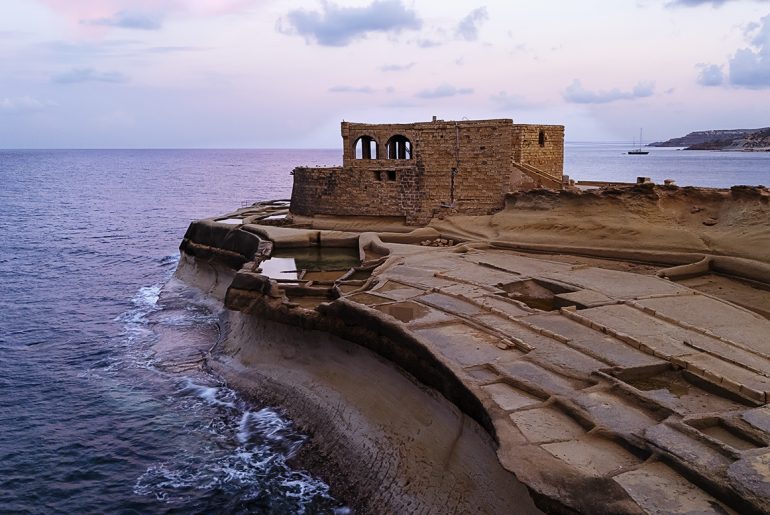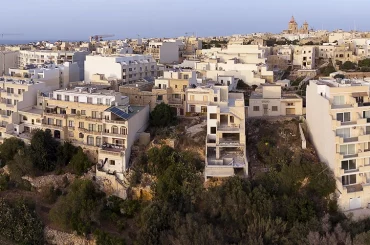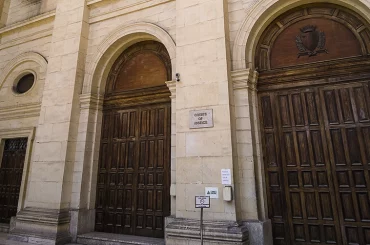They left the paper notice exposed to the elements, simply affixed to the old, faded door. And two weeks later the elements were starting to take their toll: the ink was fading, the date barely legible, the paper’s edges were curling.
Equally odd is the visit by the Lands Authority inspectors, even the point of the affixed paper itself, or at least the import of its contents.
Marked ‘urgent,’ the notice informs the ‘occupier’ that enforcement inspectors of the Lands Authority visited to talk to him, and then requesting that he calls back on a given number.
But why expect to find the ‘occupier’ at the property – Qbajjar Battery, a coastal fortification built by the Knights of St John in 1715 – given that the historical building is evidently derelict and crumbling? The building has lain abandoned for 20 years, ever since the lease of the previous lease-holder expired.

The previous lease-holder, Rook Ltd, which had opened a disco at the battery in the eighties and nineties, had taken the government to court to challenge an eviction order in 2007. Seven years have now passed since the court declared the case abandoned and terminated it.
The Lands Authority inspectors visited shortly after two answers given in parliament by Economy and Lands Minister Silvio Schembri.
On the first occasion, in late October, Schembri spoke in response to a question by PN MP Chris Said, who asked what the government had been doing to save the battery from ruination and why the NGO Din L-Art Helwa had not been given custodianship of the battery as had been intended. Schembri said that the Lands Authority would consider how to proceed with the safeguarding and rehabilitation of the battery once “legal contestations are definitively closed.”

A month later, in response to additional questions about the nature of the legal contestations, Schembri simply referred to the reply he had given the month before. The enforcement inspectors then visited 10 days later.
Research by this website suggests that Schembri’s answer was framed in the context of a warrant of prohibitory injunction that may remain active. This can be described as a leftover of the legal proceedings initiated by Said in 2007.
This suggests that, aside from an enforcement case over development without a permit that technically remains active by the Planning Authority (there are many active enforcement cases throughout Malta), the only legal entanglement that remains is the injunction, which technically remains in place until a court revokes it upon request of any of the parties.
Legal sources told this website that the abandonment and termination of the court case seven years ago made the revocation of the injunction something of a formality. All it would take is for one of the parties – the government, for example – to request revocation that would expectedly take a few days to be granted.
The government first promised custodianship of the battery to Din L-Art Helwa 16 years ago, and around two years ago the Superintendence of Cultural Heritage approved the NGO’s plan for battery’s restoration. The NGO has said that it has secured funds for its restoration.
I spoke to one of the directors of Rook Ltd, George Said, about the case three years ago, and at the time he complained that others (whom he did not specify) in a similar situation had been treated differently. It is understood that he would like to lease the building again for an entertainment establishment.
Yet the tendency of governments in recent decades has been to place historical batteries in the care of NGOs. Examples include Fort Rinella in Kalkara, which is run by the NGO Wirt Artna. Din L-Art Helwa also has guardianship of two coastal batteries: St Anthony’s Battery in Qala and St Mary’s Battery in Comino, two batteries that, like Qbajjar Battery, are set in pristine coastal landscapes.
Public sentiment also leans towards a preference of having NGOs or public entities take custody of historical buildings. In the case of Qbajjar Battery, Din L-Art Helwa and the local council have offered to collaborate in the care of the battery.
Two weeks ago, the government renewed Din L-Art Helwa’s custodianship or guardianship of St Mary’s Battery in Comino.
And the Qbajjar Battery? All we have had over the past seven years since the court case ended have been vague answers to questions in parliament. And now we also have a fading, curling sheet of paper affixed to the battery’s door.
I need a small favour...
This year I tried to raise €1000 for investigate articles published on this website. But I have collected less than a tenth of very modest target. Revelations published on this website make an impact by the robustness and reach of the delivery. Give me heart and sustenance by donating as little as €10.





